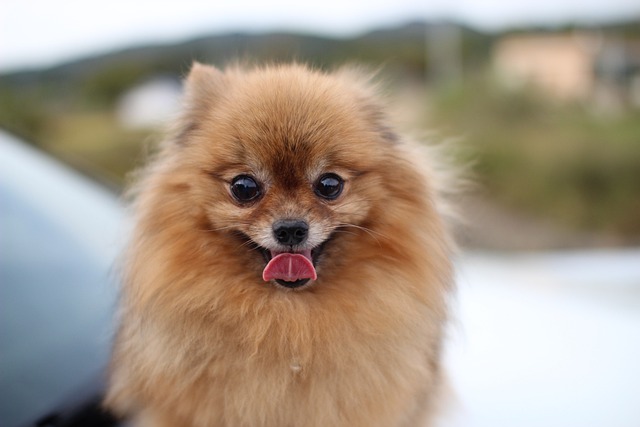
What are 5 common foods to feed dogs if they have an upset stomach
If you’ve ever watched your dog turn away from their food, then spend the next hour pacing and whimpering, you know the panic of an upset stomach.
When Sarah first brought home her Standard Poodle, Max, she was overwhelmed by the sheer amount of grooming advice floating around online. One neighbor insisted on weekly ear cleaning, while her vet mentioned monthly maintenance. The confusion around poodle ear cleaning frequency affects countless new owners across America, and getting it wrong can lead to serious health complications for your furry friend.
Poodles have uniquely structured ears that require special attention. Their floppy ears create a warm, moist environment that can trap debris and promote bacterial growth. Unlike breeds with upright ears that naturally air-dry, poodles need human intervention to maintain ear health. The challenge lies in finding that sweet spot between under-care and over-care.
The dangers of excessive ear cleaning often surprise well-meaning pet owners. When you clean too frequently, you're essentially stripping away the ear's natural protective oils and beneficial bacteria. This disrupts the delicate pH balance that keeps harmful microorganisms at bay. Over-cleaning can cause irritation, redness, and even microscopic tears in the ear canal lining, creating entry points for infections.
Many owners fall into the trap of thinking daily cleaning equals better care. However, this approach often backfires spectacularly. The ear canal becomes inflamed and produces more wax as a protective response, creating a vicious cycle where owners feel compelled to clean even more frequently. This scenario is particularly common in apartment-dwelling poodles whose owners have more time to fuss over grooming routines.
The irritation from over-cleaning can manifest as head shaking, pawing at ears, or a distinct yeasty odor. Some dogs develop contact dermatitis from excessive exposure to cleaning solutions, even gentle ones. Remember, your poodle's ears aren't meant to be squeaky clean all the time – a small amount of wax is actually protective.
On the flip side, under-cleaning poodle ears problems can be equally troubling. Poodles are prone to ear infections due to their anatomy, and neglecting regular maintenance creates ideal conditions for trouble. Wax buildup combines with moisture from swimming, bathing, or humid weather to create a breeding ground for bacteria and yeast.
When ears aren't cleaned regularly enough, you might notice a dark, coffee-ground-like substance accumulating. This buildup can harden and become difficult to remove, potentially leading to hearing impairment. The warm, trapped environment also becomes a paradise for ear mites and other parasites that can cause intense itching and discomfort.
Infected ears from poor maintenance often require veterinary intervention, including prescription medications and sometimes sedation for deep cleaning. The cost of treating chronic ear infections can easily exceed several hundred dollars annually, not to mention the discomfort your poodle experiences.
So what's the optimal poodle ear cleaning frequency? Most veterinary dermatologists recommend cleaning poodle ears every 2-3 weeks for healthy dogs. However, this timeline isn't set in stone. Active dogs who swim frequently or live in humid climates may need weekly attention, while indoor poodles in dry environments might do well with monthly cleaning.
The key is observing your individual dog's needs. Some poodles produce more earwax naturally, while others have particularly narrow ear canals that trap debris more easily. Factors like age, activity level, and seasonal allergies all influence how often cleaning becomes necessary.
During allergy season, many poodle owners find their dogs need more frequent ear care. The increased scratching and rubbing associated with environmental allergies can introduce more dirt and bacteria into the ears. Similarly, senior poodles with compromised immune systems might require more vigilant care.
When it comes to safe and effective poodle ear care tips, technique matters as much as frequency. Always use a veterinarian-approved ear cleaning solution – never water, alcohol, or hydrogen peroxide. These harsh substances can damage the delicate ear tissue and worsen existing problems.
Start by gently lifting your poodle's ear flap and inspecting the visible portion of the ear canal. Healthy ears should be pink and relatively clean, with minimal odor. Apply the cleaning solution as directed, typically by filling the ear canal and massaging the base of the ear for 20-30 seconds.
Allow your poodle to shake their head naturally – this helps dislodge debris from deeper in the canal. Then use cotton balls or gauze to gently wipe away visible dirt and excess solution. Never insert cotton swabs or other objects into the ear canal, as this can push debris deeper or cause injury.
In the United States, pet insurance often covers ear infection treatments, but preventive care like regular cleaning typically falls under owner responsibility. Many local pet stores offer grooming services that include ear cleaning, which can be helpful for owners uncomfortable with the process.
Always be mindful of your poodle's comfort level during cleaning. If they seem excessively stressed or resistant, consider breaking the process into shorter sessions or seeking help from a professional groomer. Some dogs need gradual desensitization to ear handling, especially if they've had painful ear problems in the past.
Watch for warning signs that indicate your cleaning routine needs adjustment. If you notice persistent odor, discharge, redness, or if your poodle seems uncomfortable even with gentle cleaning, consult your veterinarian. These symptoms might indicate an underlying infection that requires medical treatment before resuming regular maintenance.
The most successful poodle owners develop a flexible approach to ear care, adjusting their routine based on their dog's individual needs and seasonal changes. Keep a simple log of when you clean and any observations about ear condition – this information proves invaluable during veterinary visits and helps you identify patterns in your poodle's ear health.

If you’ve ever watched your dog turn away from their food, then spend the next hour pacing and whimpering, you know the panic of an upset stomach.

If you’ve ever cleaned up diarrhea or watched your dog vomit after meals, only to feel helpless as they refuse their next bowl of food, you know the stress of a sensitive stomach.

If you’ve ever stared at the ingredient list on your dog’s kibble, wondering what “meat by-products” really are, you’re not alone. New dog owners

If you’ve ever noticed your dog suddenly shaking their head like a wet towel, or pawing at their ear until it’s red and sore, you might’ve wondered if they’re just being “naughty.”

Finding worms in your dog’s stool or noticing them scooting uncomfortably across the floor is enough to make any pet owner’s heart sink.

If you’ve ever dreamed of having a dog but hesitated because your eyes water and nose runs around furry pets, you’re not alone.